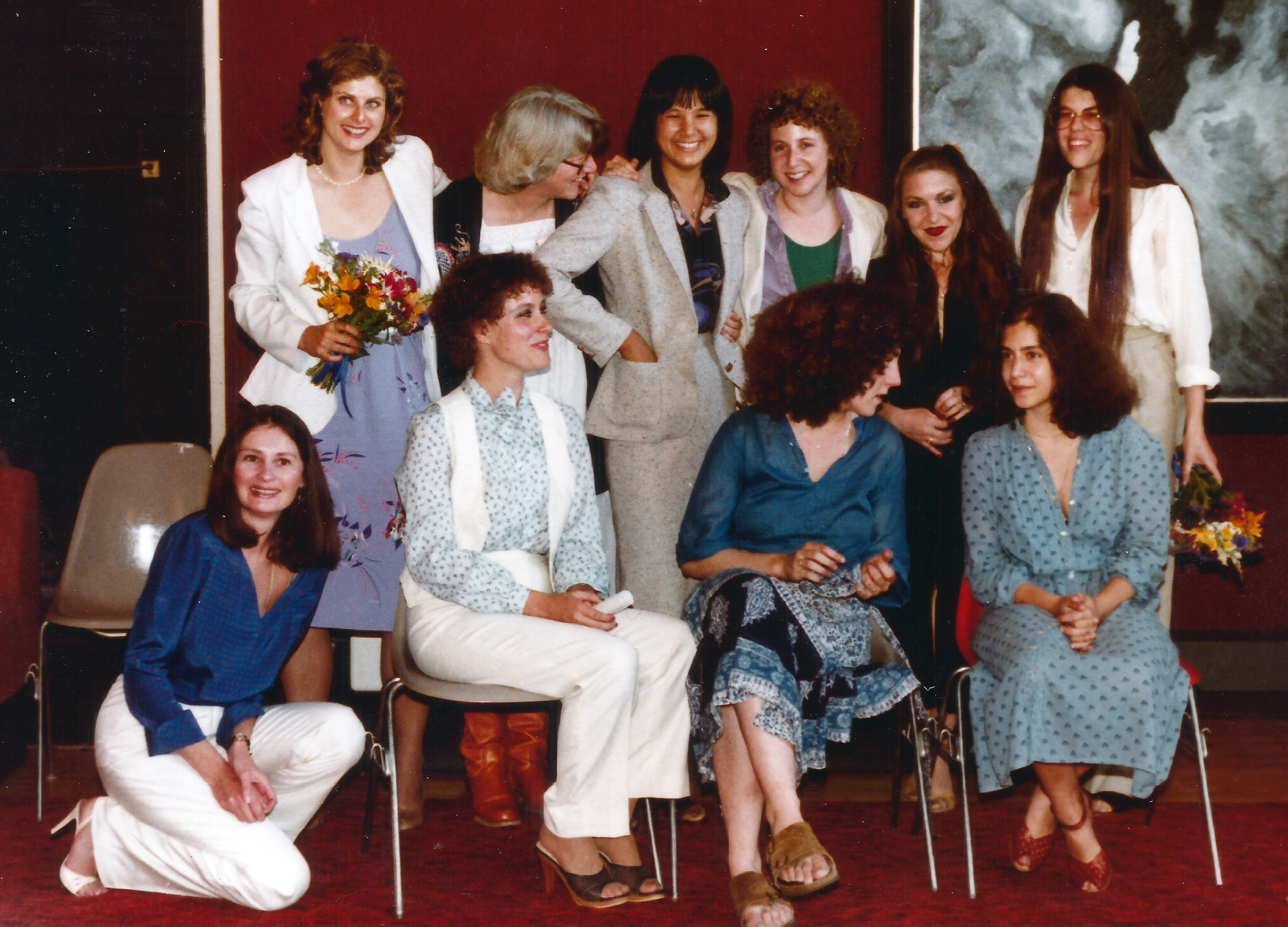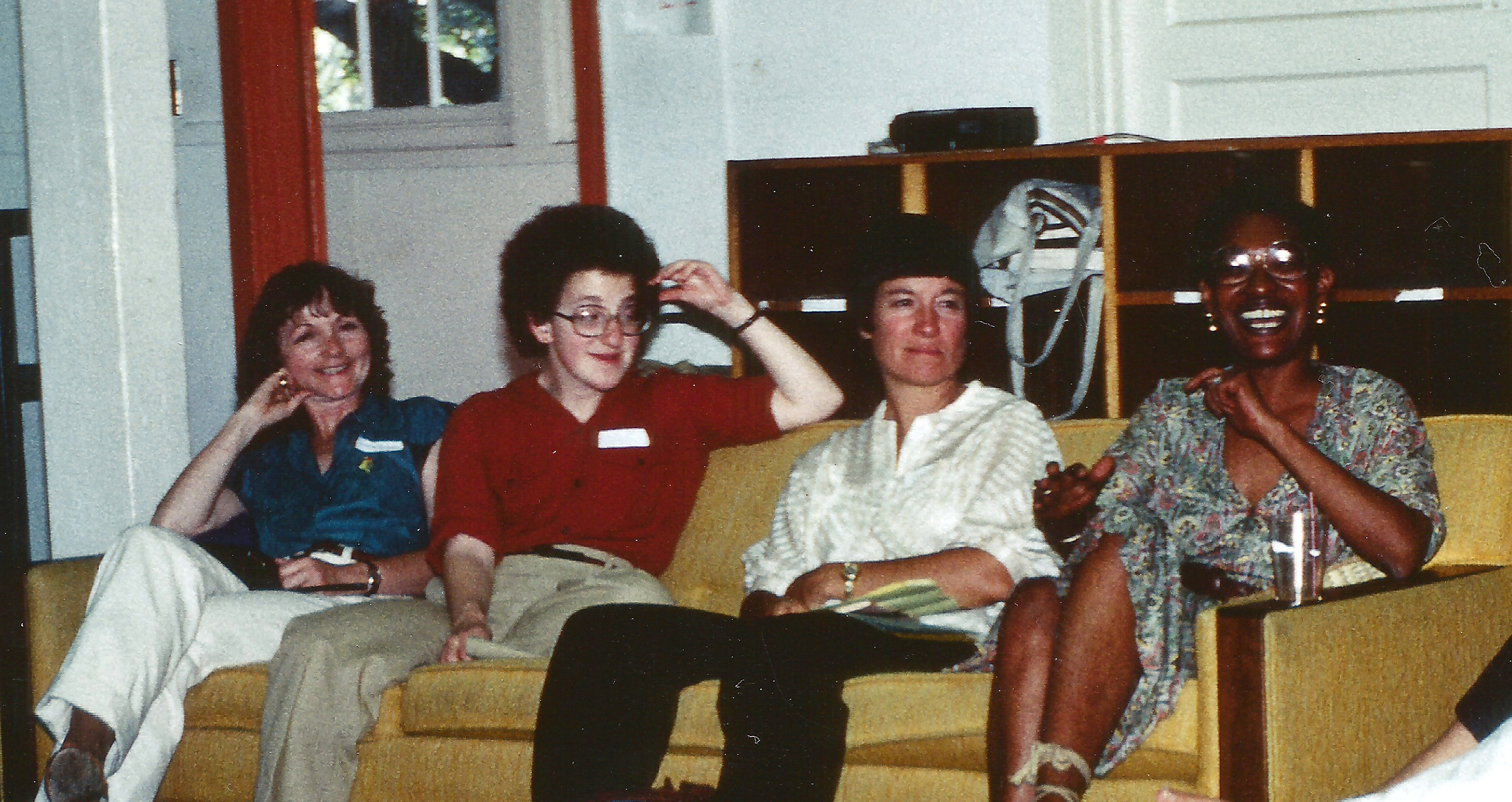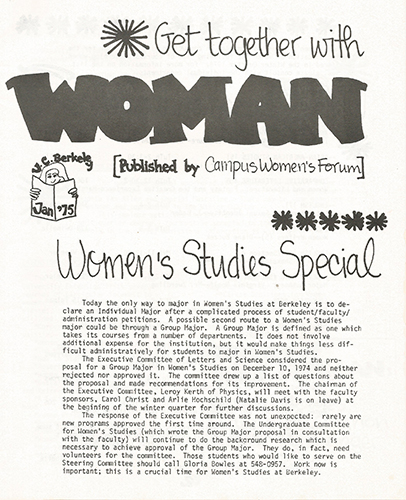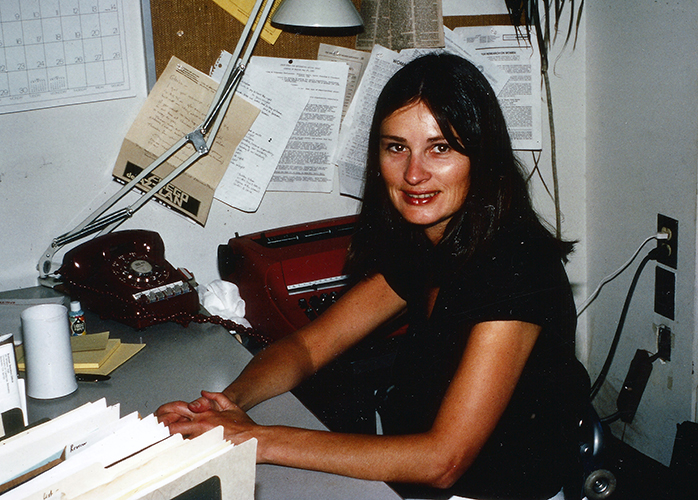
All they wanted was to read books by women.
They didn’t plan for revolution, but that is what it took.
“I don’t think any of us were conscious of starting a movement,” recalled Gloria Bowles Ph.D. ’76, founding coordinator of UC Berkeley’s Women’s Studies Program, during an interview. “We were just responding to an outrage, which was that we were students of comparative literature — we all studied four foreign languages — yet we read very few women.
“I just felt that, hey, something has to change here,” she continued. “This is not right.”
But it wasn’t just a literary canon dominated by men — it was all of academia. And it wasn’t just a reading list, but the faculty roster of an entire university.
Galvanized by the women’s movement, Bowles and other comparative literature graduate students rallied for change. They fought for more women in the curriculum and on the faculty and, with a team of undergraduates, established Berkeley’s Women’s Studies Program in 1976.
Now, a growing collection — the Berkeley Women’s Studies Movement Archive at The Bancroft Library — reveals the long, and at times turbulent, journey behind that movement, with feminist pamphlets, impassioned letters, program proposals, course syllabi, and other ephemera. The materials provide an intimate look at the trek toward gender equality at UC Berkeley, and the power of sisterhood at the heart of the march.
“It’s important that people understand that the rights women have now and the presence women have now in the larger community, in business, in law, didn’t always exist,” said Carol Urzi M.A. ’74, J.D. ’88, a contributor to the archive. “It’s a result of women fighting for these rights over many years — over centuries, really.
“Of course, women are still not treated equally in this society — there’s no question about that — but there have been a lot of advances,” she continued. “Our little archive is the documentation of what we were trying to work through at the time, in our own way, at UC Berkeley.”

‘It was feminism’
The women’s studies movement began in quintessential Berkeley fashion: with a ton of flyers.
In 1969, fed up with the patriarchal nature of her studies, Marsha Hudson Ph.D. ’78 posted notices around town announcing a new feminist literary salon, which she hosted. There, sprawled across living room floors, students discussed books by women and shared stories of the sexism they faced on campus and in their everyday lives.
“I sat there on the floor and I listened to the women’s stories, and I thought, ‘Oh, my God! I’m not alone,’” recalled UC Berkeley professor emerita Bridget Connelly M.A. ’71, Ph.D. ’74. “‘I’m not a freak for thinking what I had been thinking all these years.’
“It was feminism — but I didn’t have a word for it.”
One by one, the matches struck. Ignited by that blaze, the women moved the salon into the academy, forming the Comparative Literature Women’s Caucus to tackle gender discrimination in the department and beyond.
In a 1976 letter to then-Vice Chancellor Ira Michael Heyman — one of many striking documents in the new archive — caucus members call out the lack of women on the comparative literature faculty, as well as incidents of sexual harassment.
“The psychological undermining of the female student’s confidence and self-esteem is ritualized through sexist jokes and comments,” the letter reads. “Male faculty members expect women students to react to these critical, humiliating, and condescending comments and attitudes with humor and acceptance.”
Along with their political work, several caucus members were busy translating lesser-known women poets from around the world, publishing the translations in a set of groundbreaking anthologies. The anthologies are included in the Library’s new archive, along with many unpublished poetry translations.
“That’s what a movement is,” Connelly noted. “All these things happening together.”

Becoming a department
The women’s caucus was formed in 1970, just as the larger women’s movement was taking off. While many of the women had previously been involved in the “consciousness-raising” groups popping up around the U.S., the caucus was, finally, an arena in which to act.
“There was an explosion of women’s anger in the ’70s,” said Judy Wells Ph.D. ’76, who was an active member of the caucus. “But it had to be channeled into something.”
“It was so much in the air that something had to change — and we felt that,” said Kathleen Weaver ’68, M.A. ’73, an editor of the women’s poetry anthologies. “We didn’t want to just sit there in our classes and have the same old curriculum.
“It just began to seem so irrelevant.”
One of the caucus’s first triumphs was the establishment of a course on women in literature, to be taught by women graduate students in comparative literature. The department chair, a man, agreed to the students’ demands, and the first Women and Literature course was taught in the summer of 1972.
Topics of the course ran the gamut, from women in fairy tales to women in the industrial revolution, from women and madness to women’s experience being silenced and finding their voice. One of the first courses at Berkeley that centered on women in literature was about sexual identity. It was taught by then-English Professor Carol Christ — UC Berkeley’s first woman chancellor.
“Sexuality and gender are absolutely essential to literature, and yet it had never really been talked about,” Christ said in an interview. “It was a lens through which you could read books and come up with different kinds of insights — the plots that involve women, the choices that women have, their desires, and the nature of their perceptions of the world.”


Top to bottom: Left to right: A flyer encouraging the creation of a women's studies major at UC Berkeley; Gloria Bowles, founding coordinator of UC Berkeley’s Women’s Studies Program, sits in her office in 1979.
In the feminist air of the ’70s, interest in women’s studies courses soared around the country. One semester, more than 200 undergraduates signed up for the Women and Literature course, with only 25 spots available.
Bowles and a team of undergraduate students hatched a plot: They would build a women’s studies major program, where students could tackle the patriarchal assumptions of disciplines across campus. With help from Christ and Berkeley sociologist Arlie Hochschild — both new assistant professors at the time — Bowles submitted an official proposal for a women’s studies program in 1974.
“A certain amount of progress has been made in this country but equality is still a long way off,” the proposal reads. “And we need not talk in such general terms for inequality exists in our own backyard.”
As the proposal notes, only 2 percent of UC Berkeley’s professors were women in 1970, according to a report by the Subcommittee on the Status of Academic Women on the Berkeley Campus: “The employment of women is a rare thing indeed.”
The original women’s studies program proposals, plus subsequent requests for funding, are preserved in the collection at Bancroft. “I think it’d be interesting for people to see how we made the arguments to carry on year by year by year,” said Bowles, women’s studies coordinator from 1976 to 1983.
After several rounds of rejections and revisions, the College of Letters & Science’s Executive Committee accepted the women’s studies major in 1975, under one condition: It needed a biology course.
“There was a biologist on the committee who seemed to think you had to be really sure that people understood sexual differences in a biological sense,” Christ recalled, chuckling.
Biology class and all, the Women’s Studies Program opened its doors in the fall of 1976, with courses spanning from Asian studies to anthropology, criminology to sociology.
All together now
After a long stretch of bureaucratic hurdles and internal tensions, women’s studies became an official campus department in 1991. Today, it lives on as the Department of Gender and Women’s Studies.
And the history of the department lives on at Bancroft, available for researchers, community members, and historians for decades to come.
“It’s important to document women’s experiences because it can be very easy to take for granted that certain departments and fields of study have always existed, like women’s studies,” said Kathryn Neal, associate university archivist at Bancroft, who oversees the new archive. “It’s crucial to collect and preserve this piece of cultural heritage — to make sure it’s saved and not lost.”
Ten women have contributed their collections to the Berkeley Women’s Studies Movement Archive. Bancroft will collect materials from additional women once the COVID-19 pandemic subsides, Neal said.
“We called it the sisterhood — the ‘sisterhood is powerful,’” said Wells, whose materials are included in the archive. “And it was true.”
Illustration by A. Hamilton